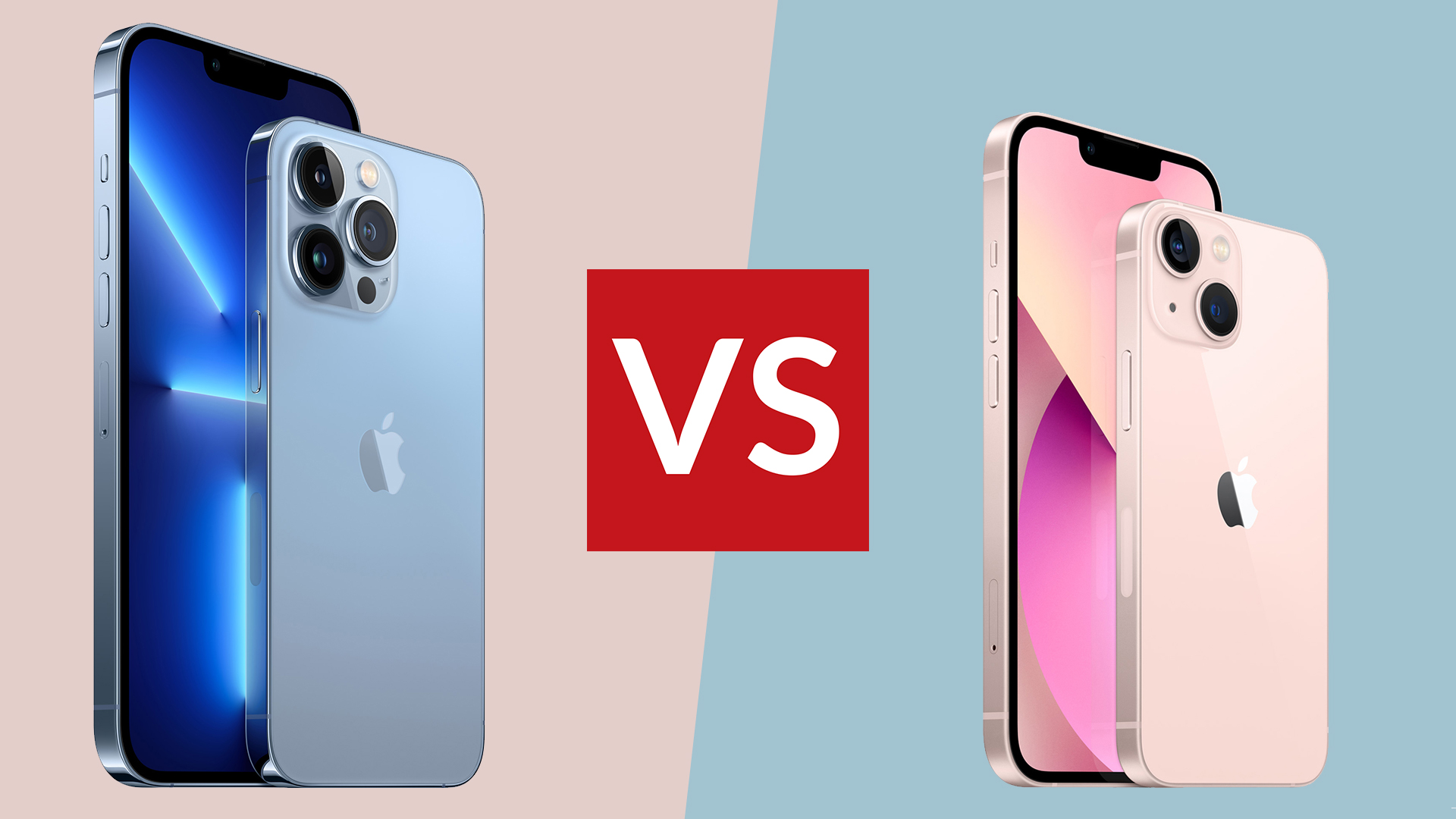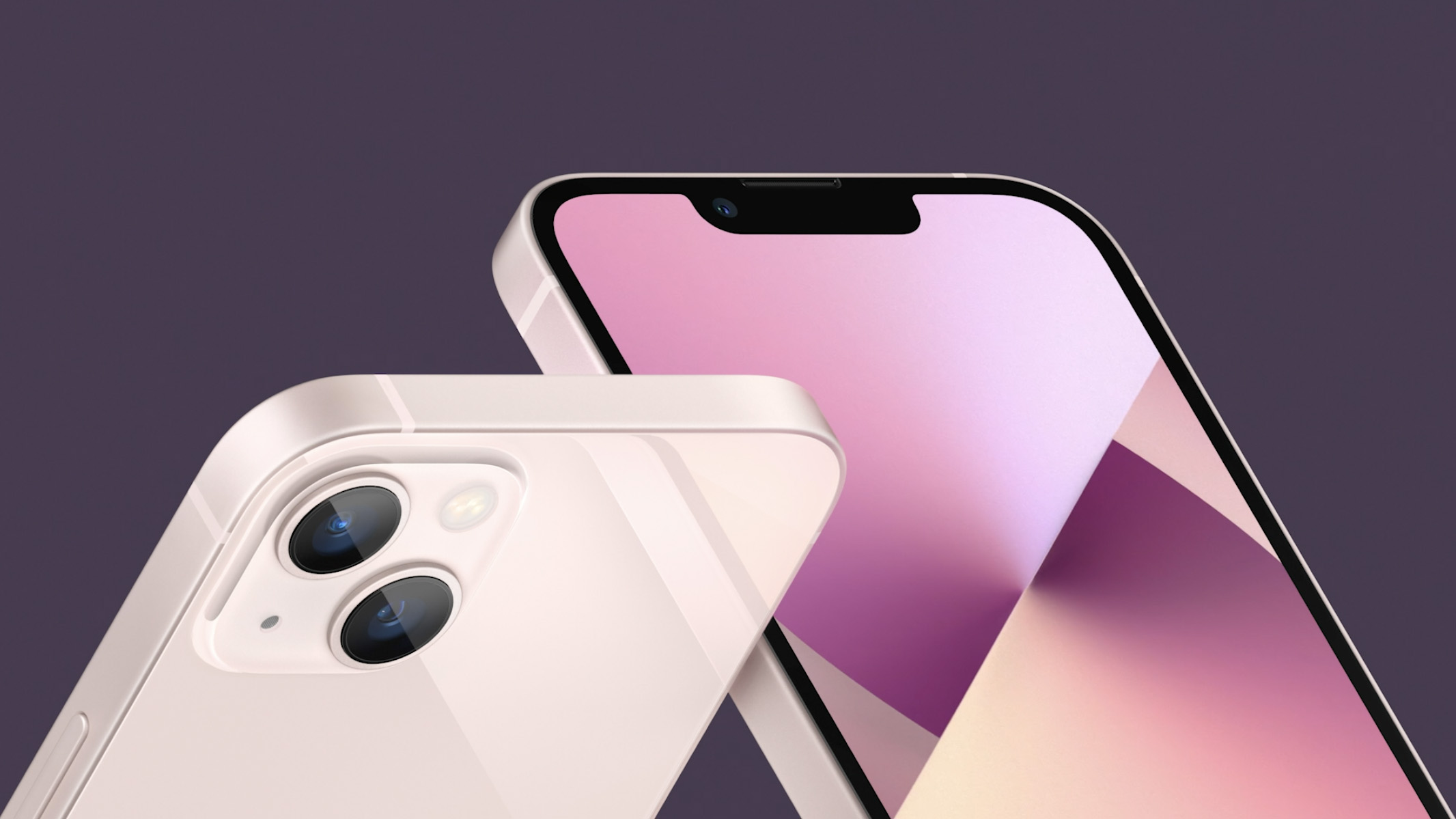

The iPhone 13 and iPhone 13 Pro may look very similar, but the Pro version has some significant differences that will delight more demanding users, or just people who want the most advanced tech out there in their phones.
The different range from spectacular cameras to better battery life and a more fluid display, and affects parts deep in the inside as well as the physical design outside. Just like iPhone 12 and iPhone 12 Pro, the differences could easily be big enough to persuade you to spend the extra on the Pro version… or equally you might decide they're not worth the cost.
We'll take you through the key differences for when you're making your iPhone 13 Pro vs iPhone 13 buying decision, so you'll know exactly what you're getting, or what you're choosing to miss out on.
In this guide, we're mostly focusing on the iPhone 13 and iPhone 13 Pro – not the 13 mini or the Pro Max. We might mention them from time to time, but we're focusing on these two models in particular.
Keep your eye on our iPhone 13 pre-orders page to see all the best deals as soon as they appear!
iPhone 13 Pro vs iPhone 13: price and availability
The iPhone 13 starts at £779 for the 128GB version, rising to £879 for 256GB and £1,079 for 512GB. US prices are $699/$799/$999, and in Australia you’ll pay AU$1,349/AU$1,419/AU$1,869.
That's for the 6.1-inch version – the iPhone 13 mini starts from £679/$699/AU$1,199.
Get all the latest news, reviews, deals and buying guides on gorgeous tech, home and active products from the T3 experts
The iPhone 13 Pro is £949 for 128GB, £1,049 for 256GB, £1,249 for 512GB and £1,449 for 1TB. In the US that’s $999/1,099/$1,299 and $1,499. Australian iPhone 13 Pros cost AU$1,699/AU$1,869/AU$2,219/AU$2,569.
The iPhone 13 Pro Max starts from £1,049/$1,099/AU$1,849.
Preorders for all models open on 17 September 2021, and will ship from 24 September 2021.
iPhone 13 Pro vs iPhone 13: design and display
The iPhone 13 and the iPhone 13 Pro look very similar, and largely identical to the iPhone 12 models but with a smaller notch. Both have 6.1-inch Super Retina XDR displays, which are OLEDs delivering 2532x1170 pixels at 460ppi.
But the Pro’s display has something that isn’t immediately obvious: ProMotion. This is an automatically adjusting refresh rate that can run from 10Hz to 120Hz depending on what you’re doing or viewing, whereas the iPhone is lock to 60Hz. That means animations and scrolling on the Pro will look much smoother and clearer, and games that run at 120Hz will feel more responsive.
Both displays go up to a brightness of 1,200 nits for Dolby Vision HDR, but in regular use the iPhone 13 maxes out at 800 nits, while the iPhone 13 Pro maxes out at 1,000 nits – so in really bright daylight, the Pro will be more visible.
The standard iPhone 13 comes in PRODUCT(RED), Starlight, Midnight, Blue and Pink, while the Pro comes in graphite, gold, silver or Sierra Blue. If you flip the Pro round you’ll see a larger camera bump with more lenses. More about that in a moment.
The iPhone 13 Pro is slightly heavier than the iPhone 13: 203g (7.16oz) compared to 173g (6.1oz). Both devices are IP68 rated for splash, water and dust resistance.

iPhone 13 Pro vs iPhone 13: processor and storage
The iPhone 13 Pro comes with 128/256/512GB storage and the Pro has 128/256/512GB and a new 1TB version.
Although both phones have the new A15 Bionic chip, a new 6-core processor with 2 performance cords and 4 efficiency cores, plus a 16-core neural engine, their GPUs differ: the standard iPhone has a 4-core GPU and the Pro has a 5-core chip.
Apple says that the A15 Bionic is way beyond the competition, which isn't a surprise – the A14 was, and Android chips haven't overtaken it yet, so Apple keeps a comfortable lead for sheer power, while apparently also being more energy efficient.
iPhone 13 Pro vs iPhone 13: cameras
One of the key differences between the standard iPhone and the Pro version is the camera setup: it was a key reason for this to choose the iPhone 12 Pro over the standard iPhone 12, and it’s a decision I haven’t regretted. So we’re very tempted by the iPhone 13 Pro, which promises to make our photography even better.
Once again there are crucial differences between the camera setups in the two iPhone models. Let’s start with the iPhone 13. It has a dual 12MP camera system with wide and ultra wide cameras offering f/1.6 and f/2.4 aperture sizes, respectively.
The sensor-shift optical image stabilisation we saw in last year’s iPhone 12 Pro Max has been added to the wide-angle lens, and Smart HDR 4 processing improves photos from both cameras. There’s also the new Cinematic Mode for video (1080p at 30fps), or regular recording at up to 4K 60fps with Dolby Vision HDR.
Impressive stuff, but the iPhone 13 Pro is even better. Its 12MP camera system has three lenses: f/2.8 telephoto, f/1.5 wide and f/1.8 ultra wide with lens correction. The telephoto is 3x zoom compared to the wide-angle. There’s a LiDAR sensor for faster focusing (especially in low light) and accurate Portrait mode depth maps, plus new Photographic Styles to save your preferred presets, impressive macro photography for the first time on an iPhone, and Apple ProRaw .
Video has all the fun stuff of the iPhone 13 plus ProRes video recording at up to 4K/30fps (1080p/30fps in the 128GB model), dual optical image stabilisation as well as sensor shift optical image stabilisation and 9x digital zoom.
The front-facing cameras on both phones are almost identical with 12MP and f/2.2, but the Pro’s selfie shooter has Apple ProRaw and ProRes support.

iPhone 13 Pro vs iPhone 13: battery and charging
Both iPhones get larger batteries, taking the promised battery life for the iPhone to 17 hours of video playback and the Pro to 22 hours. Apple says you can expect about 1.5 hours more battery on the iPhone 13 compared to the iPhone 12, and 2.5 hours more on the Pro compared to the iPhone 12 Pro.
Both phones charge wirelessly at up to 15W with MagSafe or 7.5W with Qi wireless, if you go wired there's fast charging, which gives you up to 50% in 30 minutes with an iPhone charger delivering 20W or more.

iPhone 13 Pro vs iPhone 13: conclusion
The iPhone 13 is a superb buy. It brings camera tech from last year’s iPhone 12 Pro Max, it has better battery life, it has an even faster processor and you will be absolutely delighted if you buy one. For the overwhelming majority of iPhone buyers, the standard iPhone 13 is the one to get, given that's a goo 20% cheaper.
There’s a but coming, of course. And that but is: but if you can afford it, the iPhone 13 Pro is even better. Its battery lasts even longer. It shoots even better images and even better video. And that ProMotion display, as we know from the iPad Pro, is stunning. If you’re a photographer or video maker, pro or not, the iPhone 13 Pro is the ultimate toolkit and toy box combined. It’s undeniably expensive, but it’s also an exceptional device.
Writer, musician and broadcaster Carrie Marshall has been covering technology since 1998 and is particularly interested in how tech can help us live our best lives. Her CV is a who’s who of magazines, newspapers, websites and radio programmes ranging from T3, Techradar and MacFormat to the BBC, Sunday Post and People’s Friend. Carrie has written more than a dozen books, ghost-wrote two more and co-wrote seven more books and a Radio 2 documentary series; her memoir, Carrie Kills A Man, was shortlisted for the British Book Awards. When she’s not scribbling, Carrie is the singer in Glaswegian rock band Unquiet Mind (unquietmindmusic).
